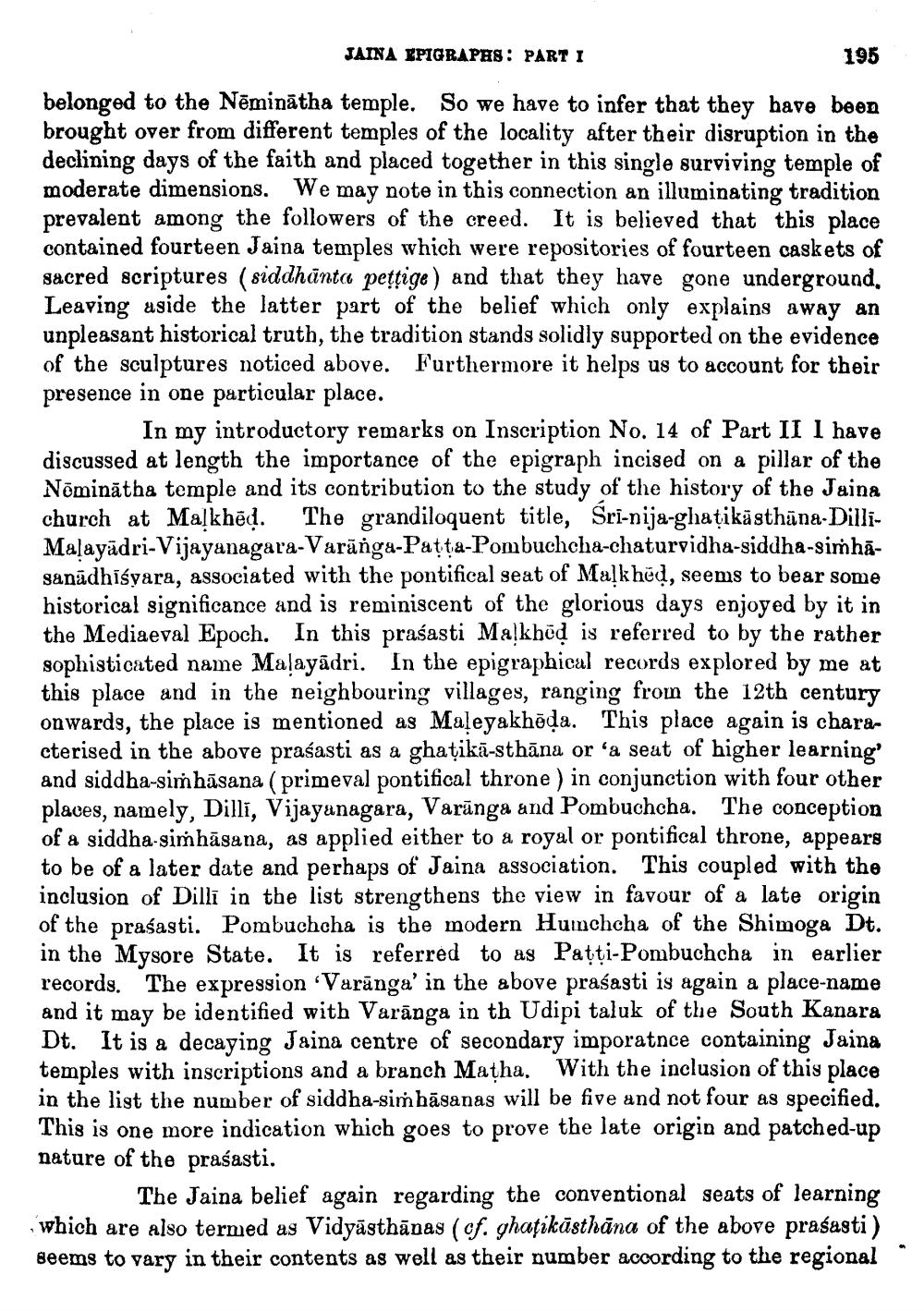________________
JAINA EPIGRAPHS: PART I
195 belonged to the Nēminātha temple. So we have to infer that they have been brought over from different temples of the locality after their disruption in the declining days of the faith and placed together in this single surviving temple of moderate dimensions. We may note in this connection an illuminating tradition prevalent among the followers of the creed. It is believed that this place contained fourteen Jaina temples which were repositories of fourteen caskets of sacred scriptures ( siddhānta pettige) and that they have gone underground, Leaving aside the latter part of the belief which only explains away an unpleasant historical truth, the tradition stands solidly supported on the evidence of the sculptures noticed above. Furthermore it helps us to account for their presence in one particular place.
In my introductory remarks on Inscription No. 14 of Part II I have discussed at length the importance of the epigraph incised on a pillar of the Nominātha temple and its contribution to the study of the history of the Jaina church at Malkhēd. The grandiloquent title, Sri-nija-ghatikāsthāna-DilliMalayādri-Vijayanagara-Varānga-Patta-Pombuchcha-chaturvidha-siddha-simhāsanādhisyara, associated with the pontifical seat of Malkhëd, seems to bear some historical significance and is reminiscent of the glorious days enjoyed by it in the Mediaeval Epoch. In this prasasti Ma!khod is referred to by the rather sophisticated name Malayādri. In the epigraphical records explored by me at this place and in the neighbouring villages, ranging from the 12th century onwards, the place is mentioned as Maleyakhoda. This place again is characterised in the above praśasti as a ghaţikā-sthāna or 'a seat of higher learning' and siddha-siṁhāsana (primeval pontifical throne ) in conjunction with four other places, namely, Dilli, Vijayanagara, Varānga and Pombuchcha. The conception of a siddha-siṁhāsana, as applied either to a royal or pontifical throne, appears to be of a later date and perhaps of Jaina association. This coupled with the inclusion of Dillī in the list strengthens the view in favour of a late origin of the prasasti. Pombuchcha is the modern Humchcha of the Shimoga Dt. in the Mysore State. It is referred to as Patti-Pombuchcha in earlier records. The expression Varānga' in the above praśasti is again a place-name and it may be identified with Varānga in th Udipi taluk of the South Kanara Dt. It is a decaying Jaina centre of secondary imporatnce containing Jaina temples with inscriptions and a branch Matha. With the inclusion of this place in the list the number of siddha-simbāsanas will be five and not four as specified. This is one more indication which goes to prove the late origin and patched-up nature of the praśasti.
The Jaina belief again regarding the conventional seats of learning which are also termed as Vidyāsthānas (cf. ghaţikāsthāna of the above praśasti) seems to vary in their contents as well as their number according to the regional"




